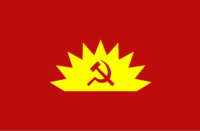Ireland in 2017 is in a state of confusion. On the one hand the official line tells us that we are out of the recession, that government revenue and expenditure are increasing annually. The level of general government deficit is declining, and government debt in 2016 was 75 per cent of GDP—from a peak of 120 per cent in 2013.
We still need to borrow money to finance government expenditure, but at continually lower levels. Employment is increasing, and unemployment is decreasing (6½ per cent in 2016), while we are stabilising migration levels. Recording net immigration for the first time since 2009, we still maintained net emigration of 10,700 Irish nationals in 2016.
On the other hand, once we switch off the official paradigm and dig deeper into the government figures we see that the reality for more and more people is contrary to that of official Ireland. The major shifts and changes in the work-place alone that have occurred since 2007 or 2008 include, to name a few:
• the transforming of stable employment into precarious employment
• the early retirement and replacement of experienced and unionised workers with entry-grade workers
• the inequality of pay in public-sector jobs
• the erosion of standards, terms and conditions in employment contracts
• the introduction of “internship” schemes.
These have meant that, over this ten-year period, labour has been devalued, both in monetary and merit terms.
The Government and its media mouthpieces endlessly parade official Ireland as a success, again being used as the EU’s poster child. But what price will the present and future generations of Irish workers have to pay to maintain the thin veil that separates statistical figures from material reality?
Fig. 1 shows Government figures for receipts (money in) and payments (money out), taken from the Report on the Accounts of the Public Services, 2015, up to and including the audited accounts for 2015. Taking this ten-year period will point towards trends to give a sense of the trajectory of this state.
Fig. 1: Total government receipts and payments, 2006–2016

When dealing with government budgets, a simple analogy of a working household with a combined income of approximately €50,000 might shine some light on the situation. When households make out a family budget they naturally take account of all expected income and expenditure. If their expenditure is greater than income, households will either reduce their expenditure or take out loans to increase their current income.
Governments are no different: it’s the scale and scope of budgets that separate them, but the fundamental premise of economic stability is that income, in the long run, needs to be equal to, or greater than, expenditure.
Families are aware that if they borrow they are either opting to reduce spending some time in the future or will need to increase their income. If they get into debt, for whatever reason, they will have to take care of the short-term interest payments and the medium to long-term principal debt. The household budget will then have to be adjusted to take account of the payments.
If, furthermore, a source of income is reduced as a result of retirement, cuts in working hours, a cut in wages, or any other reason, further adjustments to the household’s budget will have to be made, and family austerity kicks in.
A combined effect of having high debt and loss of income will be that all fixed, variable and discretionary expenditure will come under scrutiny in order to balance the budget. If income is still less than expenditure, further loans may be required to pay for current expenditure and debts. A family may need to supplement its income by taking on other jobs and getting other family members to contribute to the pot, while also reducing their level of expenditure.
Here’s the spoiler: no honest or sensible family member would ever take on a debt burden not of their own making, to the amount of many times total family income, and thus jeopardise the future stability of the family.
Leaving the family analogy and coming back to Ireland, our budgets up until the bank guarantee were balancing. We had balanced levels of income and expenditure. Of course the source of our income—with a narrow focus on construction, financed by international capital and managed by mainly Irish banks—was a large factor in the amassing of such a debt.
Once the banking system was bailed out by the taxpayer in 2008, permanent indebtedness followed. This affected government sources of income and levels of expenditure, as seen in the graph (fig. 1). Money coming in to pay for central government dropped, while the costs and payments increased, and remained high, because of increases in welfare payments and of course the state’s bail-outs and pay-outs for the numerous banking institutions.
We’ve only now, in 2017, come to a stabilising level of income and expenditure, nearly a full ten years after the crisis. The cost of that stability, however, has meant increased taxes on incomes, goods, and services, and cuts in public services. Cuts in government spending allow the state to wash its hands of the provision of services, opting for privately run operations instead. Take-home pay has stagnated or fallen. The fall-out from the failure in policy of our construction-led economy has led to mass unemployment and emigration.
The further policy of guaranteeing an odious private debt has led to permanent austerity and permanent debt, which has further driven privatisation and new terms in work contracts. High unemployment opened up avenues for unpaid internships, displacing paid labour, which has now embedded itself as a norm in nearly all work-places.
This is what awaits the thousands finishing school or graduating from university this year and entering the work force, and the millions more who will follow.
The difference between the position of the balanced budgets in the years leading up to the crisis and today is the massive debt burden hanging over the Irish people. For example, interest payments on general government debt are in the region of 14 per cent of government revenue. As the table and fig. 3 show, the Irish state has had to pay out more than €40 billion on servicing the national debt since 2008. Ireland has the third-highest expenditure on debt-servicing in the euro zone as a percentage of GDP, at 4.7 per cent, as seen in fig. 2.
Table 1: Servicing the national debt, 2006–2015 (€ billion)
| 2006 | 2007 | 2008 | 2009 | 2010 | 2011 | 2012 | 2013 | 2014 | 2015 | |
| Servicing of national debt | 1.68 | 1.68 | 1.61 | 2.64 | 3.62 | 4.74 | 5.82 | 7.46 | 7.58 | 7.11 |
| Gross general government debt | 44.16 | 47.57 | 80.17 | 104.78 | 144.23 | 189.71 | 209.99 | 215.30 | 203.30 | 201.27 |
| Gross general government debt as proportion of GDP | 25% | 42% | 62% | 86% | 110% | 120% | 120% | 105% | 79% |
Fig. 2: General government debt and interest, 1982–2018

Not only have we paid out billions for a debt that wasn’t of our making but Ireland’s economy will be saddled with debt payments for decades to come. Irish people still carry the second-largest debt burden per capita in the world, at €43,571 per head.
Fig. 3 shows the maturity profile of government bonds and EU-IMF programme debt (totalling €171 billion) at the end of June 2016. Almost 34 per cent of this outstanding debt is due to mature in the period 2017–2020. Here is an extract from the Report on the Accounts of the Public Services:
The NTMA expects to hold year-end 2016 cash and liquid asset balances of approximately €8 billion. The next significant bond maturity is in the fourth quarter of 2017; the current balance outstanding is €6.3 billion. Looking further ahead of the forecast horizon, there are significant bond redemptions to fund, particularly in 2019 and 2020 when four separate Government bonds mature. The current aggregate outstanding balance on these bonds is just under €34 billion. Bilateral loans from the UK, Denmark and Sweden also begin to mature in 2019. The next IMF maturity is in 2021.
This means that in the next three to four years the Government must use approximately €58 billion of its revenue to pay off these debts—that is, nearly three years’ worth of the income tax paid by more than two million people employed in this state. They may opt to sell Government bonds to help pay off some of it, but all that will do is add to the generations of Irish people who will have to pay back the odious private debt.
The failure of the political establishment to work on behalf of the people and instead to look after the interests of foreign and domestic capital is not surprising. However, if working people fail to come to the radical notion that it is our sovereign right to reject and repudiate the odious debt, then we pass on our burden to future generations.
Fig. 3: Maturity profile of government bonds and EU-IMF programme debt, June 2016

It is in the context of this debt that we must try to steer a new, radical course for ourselves. The policies of Fine Gael, Fianna Fáil and the Labour Party will continue. They will continue to reduce the funds made available to local authorities (from €8.5 billion in 2007 to €4.3 billion in 2015), stripping away funds for essential services to our communities.
It is a simple move by the Government to abdicate responsibility for the provision and maintenance of these schemes, thereby reducing its costs and so helping to balance that budget. Current international trade agreements sponsored by the EU will set up new waves of privatisation of public assets and services, which are supported by the political establishment and are already under way with our water and our public transport system. Only militant workers’ and community action has halted the wave for now, but it will hit again.
People may look to Sinn Féin, but whether it can mount a challenge will depend on it becoming radical on the debt issue and our relationship to the EU. With its focus on the unification of the two failed states, it is unlikely that it will suddenly mount a serious challenge to the EU powers; and so Sinn Féin, as it stands, cannot bring forward the radical politics needed if Ireland is to rid itself of this odious debt, regain its economic and political sovereignty, reverse the privatisation agenda in favour of public ownership and provision, strengthen the power of labour over capital, and, most importantly, depend not on international capital and foreign investment but on the ability of Irish working people to create, produce and reproduce a sustainable, developed and planned economy.
What may seem the most natural thing is also often the most radical.





